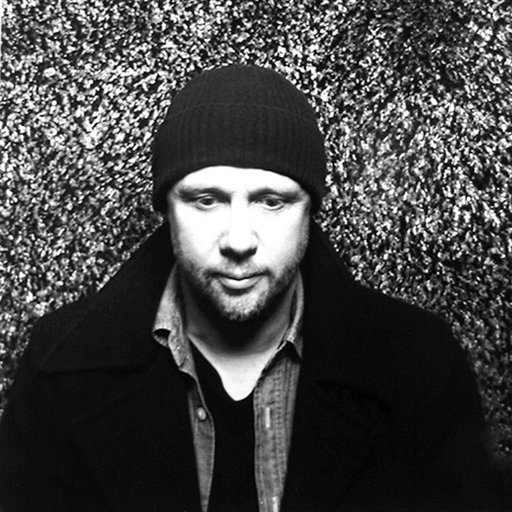Luke Butler
Luke Butler’s work is a continuing investigation into the peculiar reality of popular culture. Inherently disposable, it is all but inseparable from our lives, and is a genuine point of connection with other people. His work borrows its universal language and bends it toward subjectivity–to anxiety, masculinity, mortality, and a lifelong fascination with the figures that tell the stories.
In Butler’s series aptly titled The End, Luke paints THE END as a figure in a landscape. Removed from its narrative role, it is both familiar and strange. As a static image, it seems contradictory, absurd, and poignant–an anti-picture. Its message strays, becoming evocative rather than declarative, no longer an exit, but a memento mori.
If The End turns the actual landscape legendary and evanescent, the artist's other works draw humanity out of iconic television figures. Using imagery from the 1970s, these works emphasize vulnerability, sorrow, ambiguity–things more commonly seen outside the tidy world of televised narrative. In paint, on canvas, frozen in mid-gesture, men of action become figures of pathos. They have somewhat the appearance of religious painting. Television was an indelible and impactful presence in Luke’s young life. Insinuating its legendary figures into a larger picture of mythology …
Luke Butler’s work is a continuing investigation into the peculiar reality of popular culture. Inherently disposable, it is all but inseparable from our lives, and is a genuine point of connection with other people. His work borrows its universal language and bends it toward subjectivity–to anxiety, masculinity, mortality, and a lifelong fascination with the figures that tell the stories.
In Butler’s series aptly titled The End, Luke paints THE END as a figure in a landscape. Removed from its narrative role, it is both familiar and strange. As a static image, it seems contradictory, absurd, and poignant–an anti-picture. Its message strays, becoming evocative rather than declarative, no longer an exit, but a memento mori.
If The End turns the actual landscape legendary and evanescent, the artist's other works draw humanity out of iconic television figures. Using imagery from the 1970s, these works emphasize vulnerability, sorrow, ambiguity–things more commonly seen outside the tidy world of televised narrative. In paint, on canvas, frozen in mid-gesture, men of action become figures of pathos. They have somewhat the appearance of religious painting. Television was an indelible and impactful presence in Luke’s young life. Insinuating its legendary figures into a larger picture of mythology is one way for him to see beyond its frame.
Butler has held solo exhibitions in Los Angeles and San Francisco, and has been included in numerous group shows, most notably at the Museum of Contemporary Art San Diego and the 2010 California Biennial at the Orange County Museum of Art.
Courtesy of Charlie James Gallery
BFA, Cooper Union School of Art, New York, NY, 1994






